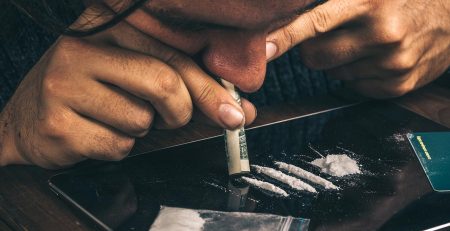Cocaine is a central nervous system (CNS) stimulant that has been around for centuries. As early as 2,500 B.C., Inca natives in the Andes would chew coca leaves to increase their heart rates, stimulate their senses, and keep them awake longer. Because they lived high up in the mountains, this indigenous group would chew coca leaves to combat the effects of thin air. Nowadays, many know cocaine as a dangerous and addictive drug that can have a severe impact on mental and physical health. Travel through time with us as our drug and alcohol treatment center in Palm Beach goes through the three eras of cocaine.
Questions about our Programs?
Our admissions coordinators are available 24/7 to answer any questions you may have as you consider whether treatment at Banyan is right for you or your loved one.
What Are the Three Eras of Cocaine?
Cocaine was used for a variety of other things before its dangers were realized. To better understand the brief history of cocaine use, we’ve broken it up into three eras.
First Era: 2500 B.C.
The three eras of cocaine history begin a few thousand years before the birth of Christ. Cocaine is derived from the coca plant, Erythroxylum coca, which is native to the Andean highlands of South America. These highlands run through Venezuela, Colombia, Ecuador, Peru, Bolivia, Argentina, and Chile. The three countries that currently produce the most cocaine are Colombia, Peru, and Bolivia. The Andean people would chew these leaves to experience the high caused by their main ingredient, cocaine alkaloid. Chewing these leaves was incorporated into various facets of life, including physical work, religious ceremonies, and religious rituals. The coca leaf eventually became a common aspect of the Inca Empire.
It wasn’t until the Spanish conquistadors arrived in South America in the 1500s that the use of cocaine was first documented. These foreigners enslaved the native people and forced them into a brutal colonization campaign. Upon the Spaniards’ initial discovery of cocaine, the Catholic Church advised them to ban the use of coca leaves. However, when conquistadors realized how these leaves would keep laborers awake longer, they continued to enforce them. Eventually, the church fell in line with the idea to enforce cocaine use among laborers. Cultivation operations were even created and the church collected taxes on coca plants.
There’s no way to tell how many people in history have experienced the negative effects of cocaine high. Fortunately, the dangers of cocaine are understood today and there are treatment options available to help patients recover from drug addiction. At Behavioral Health of the Palm Beaches, we offer a medically monitored detox program that helps individuals wean themselves off of cocaine and mitigates addiction cravings. Team members who lead these treatments may also administer medication as needed to alleviate uncomfortable withdrawal symptoms.
Second Era: 1800s
While the coca plant thrived in the heat of the Andean mountains, they rarely ever survived long enough on trips to Europe. This is partly the reason why it took so much time for cocaine to become widely known. The potency of these plants would degrade quickly due to conditions on ships and the length of time out of the sun. It wasn’t until the mid-1800s that the science and medical community began to take notice of cocaine’s side effects. In 1859, Italian physician Paolo Mantegazza wrote the first essay claiming that coca had psychoactive properties and possible medical uses. In the same year, German chemist Albert Niemann isolated cocaine from coca leaves for the first time. These discoveries shaped the way cocaine would be understood for the rest of time
However, the second era of cocaine doesn’t end there. In 1863, French chemist Angelo Mariani or Ange-François Mariani introduced a coca wine to the public, contributing to the growth of recreational cocaine use in Europe. The main purpose of combining coca leaves and wine was due to the fact that the alcohol acted as a solvent for cocaine alkaloid. At the time, cocaine was already being used as a mood enhancer and cure for various aches and ailments. The wine Mariani created only encouraged further use.
Fast-forward to the 1880s – remember Albert Niemann? Well, his former student Wilhelm Lossen would go on to create cocaine hydrochloride, which is the powder form of cocaine. This powder was used by many in Europe at the time. This group of cocaine users also included well-known Austrian psychologist Sigmund Freud. He even wrote a book titled Uber Coca in 1884 praising the effects of cocaine. Eventually, a new version of Mariani’s coca wine would come into the scene in the United States – Coca-Cola.
Third Era: 1900s
It wasn’t until the 1900s that the harmful side effects and abusive potential of cocaine were publicly acknowledged. Access to cocaine was without limit; the drug was incorporated into a vast majority of medications at the time. The lack of regulation regarding cocaine use only fed into the growing problem of addiction in America. In 1902, it was estimated that between 200,000 and 400,000 Americans had a cocaine addiction. The risks of cocaine use eventually became apparent to the public and even Freud renounced his support regarding the habit. In 1903, Coca-Cola removed cocaine from its products and legal restrictions concerning cocaine began to increase, starting with the 1906 Pure Food and Drugs Act.
Get a Free Insurance Verification Today!
"*" indicates required fields
Nowadays, the dangers of cocaine are widely known and anything concerning its production, distribution, and use is as regulated as possible. Despite government efforts to mitigate cocaine abuse in the U.S., many individuals still have access to cocaine. Cocaine addiction can be life-threatening, ruining a person’s health, relationships, and finances.
At BHOPB, we offer cocaine addiction treatment that has helped restore numerous people to sobriety. If you or someone you know is struggling with drug or alcohol abuse, call us now at 561-220-3981 to find out how we can help.
Sources:
- Britannica – Andean Peoples
- NIH – [“Fabulous things”. Drug narratives about coca and cocaine in the 19th century]
- UNODC – A Century Of International Drug Control
Related Reading:













